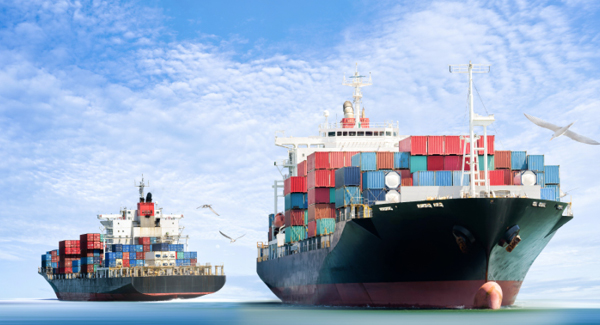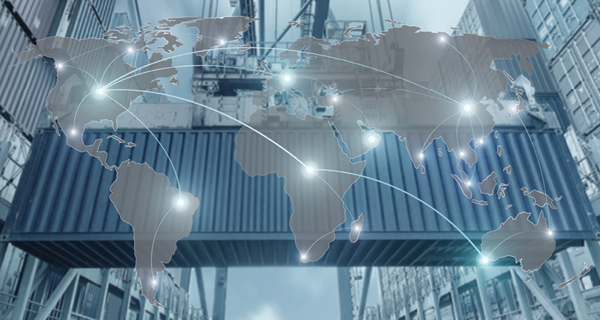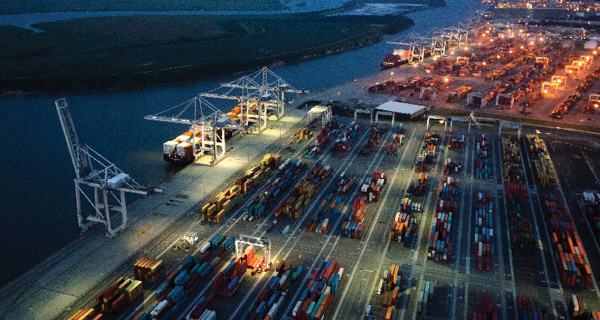
5 Hacks for Recruiting in Supply Chain Management
Supply chain and logistics requires innovative, logical thinkers to be recruited in order to compete with rapid technology advancements and global expansion. Finding the right candidate for your business is a challenge that requires broad advertising, rigorous interviews, and ultimately some give and take from both sides. Not only does the individual need to be […]
Read MoreAdding Value to Your Supply Chain
Demand to provide the optimal customer experience continues to escalate, and companies must continually seek out better ways to deliver customer satisfaction and retention. Many companies find that value-added logistics services help give their supply chain a competitive edge. Once limited to services such as shrink-wrapping, display building, and rainbow pallets, value-added capabilities now include […]
Read More
Carrier Network Plants Seeds of Delivery Efficiency
By cultivating a partnership with a technology-based 3PL, a fruits and vegetables distributor quickly gets fresh deliveries to customers, with full visibility.
Read More
Most Mid-Market Supply Chains Are Under-Served
On average, mid-market supply chains ($50M to $150M) replace their supply chain providers every two to three years. The two overwhelming reasons why are because they don’t realize continuous return on investment (ROI) improvement and they lack strategic account support. Mid-market supply chain owners are caught in a conundrum: They’re too big for the small […]
Read More
Incoterms: Playing by the Rules
When doing business globally, who pays the freight, you or your vendor? Who assumes the risk if cargo is damaged? Enter Incoterms, a set of international rules that interprets the most commonly used trade terms.
Read More
Testing the Quality of Logistics-Critical Applications
Deploying applications quickly and affordably, and ensuring those systems perform as promised, will be a key to success in tomorrow’s freight and logistics sector. You no doubt recognize the need for robust apps testing. Often the challenge is finding the tools and capacity to break the testing logjam—and to accelerate your time to innovation. Software […]
Read More
What Your Transportation Management System Should Provide
The transportation and logistics world is abuzz with the need for ever stronger and more diverse transportation management systems (TMS). This is apparently true for small and large shippers alike. And in today’s world of diverse rates and worldwide shipping operations, both inbound and outbound, the need grows stronger each year. So what should a […]
Read More
How 3PL Warehouses Can Capitalize on the Escalating Demands of Prospects and Customers
2017 is looking to be a memorable year for the warehousing industry. For the first time since the mid-2000s, 3PL warehouses are not only in demand, but in a position of strength. This will provide 3PL operators with a unique opportunity to build lasting relationships with key customers, suppliers, and retailers of their choice. However, […]
Read More
Predictive Analytics Takes Forecasting to a New Level
Technology users in 2012 generated 2.5 exabytes of data per day, three-quarters of which is text, audio, or video messages. That’s a lot of data for companies to review and potentially leverage, and is one reason for the increasing use of predictive analytics, a cost-effective way to filter through and utilize large amounts of data. […]
Read More
Today’s Competitive Supply Chain: Digital, Smaller, More Resilient
Historically, the supply chain and manufacturing industry has been relatively slow to embrace the opportunities presented by the digital revolution. Technology is advancing quickly, and it’s time to buck this trend. Whether it’s recognizing the crucial strategic strength and impact offered by the Internet of Things (IoT), taking advantage of the dramatic increase in automation, […]
Read More
Defending Your Supply Chain Against Hackers
As organizations continue to outsource, form partnerships, and share data with third parties, a strong vendor risk management (VRM) program that stays ahead of risks in the information supply chain has to be a top priority. Hackers stole confidential data from tens of millions of Target customers during the height of the holiday shopping season. […]
Read More
GTM Solutions: Making a World of Difference
How Global Trade Management (GTM) solutions automate complex international supply chain sourcing, logistics, cross-border trade, and regulatory compliance activities.
Read More
Retail Logistics Bets on E-Commerce
For retailers, e-commerce—and its impact on supply chain management—is no longer a roll of the dice; it’s a sure thing. Here’s how successful retailers beat the odds.
Read More
Georgia: Setting the Pace in the Logistics Race
An ideal location, reliable infrastructure, talented workforce, and best-of-breed technology position companies locating in Georgia to take the lead.
Read More
Extending the Life Sciences and Pharmaceutical Supply Chain
In the life science and pharmaceutical area, an inefficient supply chain can cause serious problems including product degradation and late deliveries of life-saving medications. Third-party logistics (3PL) providers specialize in streamlining their customers’ supply chains, merging logistics expertise with state-of-the-art innovations. While manufacturers search for ways to distinguish products in a competitive marketplace, many do […]
Read More
Advantages of Digital Technology
Q: INTTRA recently celebrated its 15th anniversary. Can you describe how digitization in ocean shipping has evolved since 2001? A: Some carriers and shippers moved to adopt standardizing form exchanges early on; then bespoke, single-process products (e.g., rates management), and later ERP systems. Cloud-based Transportation Management Systems (TMS) allowing shippers to avoid expensive in-house implementations […]
Read More
How to Meet Global Shipment Compliance Challenges
Q: What role does technology play in meeting today’s challenges of global shipment compliance? A: Today’s complexities in managing export and import shipments are evident. When U.S. Customs announced the requirement of Sea AMS filing, which is also known as the 24-Hour Rule, it started a wave of technology enhancements throughout the globe requiring all […]
Read More
Winning on Your Terms
In an age when so many conversations begin with, "Have you heard what Amazon just announced?," wouldn’t it be nice to have your competitors worry about your latest supply chain success? It’s rather easy to become distracted by the daily activities of the world’s largest retailer. But keeping our collective eye on the ball has […]
Read More
Mastering Logistics Complexity: How to Take Control With Technology
There was a time when road distribution was either local delivery from local producers, or the ‘final mile’ delivery of goods that had been transported longer distances by rail or interstate highway first. The typical journey was either point to point or a regular circuit of collections and drops. An experienced transport manager, or even […]
Read More
How to Reap the Benefits of Asian Free Trade Agreements
Asian governments began developing bilateral free trade agreements (FTA) in addition to region-based multilateral agreements in 2000. These bilateral agreements were viewed as easier to negotiate and provided a quicker way to open up new export markets. The growth of bilateral FTAs in this region has led to what many economists refer to as the […]
Read More